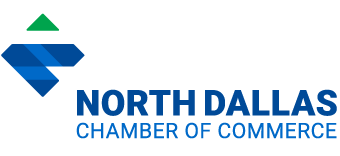A Frog for Breakfast
By Daniel LaBroad, Ovation Health & Life Services
My recent posts have been related to having a work and life balance, and what it means to me. It is a constant endeavor of my own with a young family, and two busy careers. Well, recently I have been reading a great book called The One Thing by Gary Keller and Jay Papasan.
While I have not quite finished it yet, I already pulled a lot of great information just from the first half, and recommend everyone read it. Just in the first few chapters, my work life and daily routine were quickly impacted with the reconstruction of TO-DO lists.
Like me, at the end of each day, you probably make a list of things to do the next day. Your goal is to check each one off by end of the next day, while answering calls, checking emails, and running your business. If you are again like me, as the end of day would appear, my list would be incomplete. Many times, the more important tasks were still on it. I would then redo my to-do list for the next day, only to have the same result. Why were the bigger, more important tasks not getting done? What was I missing? I realized after reading that the list was missing a sense of priority. “Achievers always work from a clear sense of priority.” TO-DO lists tend to be lists of tasks that need to be done each day to survive or have a sense of completion. But does your daily list really drive success or balance?
We have all heard Pareto’s Principle that 80% of success comes from 20% of work; or 80% of income from 20% of clients, etc. You can apply these numbers to just about anything, and the book really breaks it down for you. The overall fact is that “the minority of your effort leads to the majority of your results.“ In The One Thing, the authors talk about how to take your to-do list and prioritize it down to a success list using this principle.
Step 1: Take your TO-DO list and next to each item, write SHOULD DO or COULD DO.
- Clean desk COULD DO
- Call Bob about lunch COULD DO
- Finish new client proposal SHOULD DO
- Write blog SHOULD DO
- Read paper COULD DO
- Balance checkbook COULD DO
- 25 cold calls SHOULD DO
Step 2.: Move the SHOULD DO’s to a new list, your Success List.
- Finish new client proposal SHOULD DO
- Write Blog SHOULD DO
- Cold calls SHOULD DO
Step 3: Now, repeat the process until you get down to one item that will be your priority for that day.
- FINISH NEW CLIENT PROPOSAL
No matter how many TO-DO’s you start with, you can always narrow it down to one priority task that will lead to greater success. Many times, this will be something you have been putting off for a while, or something you are dreading doing, or a task that will take a long time.
For the past two weeks I have been taking my list and narrowing it down to one thing that I will do first each morning, when my willpower is the highest (that’s a whole ‘nother topic) Before I respond to email or work on anything else, I complete that one task, no matter how big or small. Once done, I then move on to my other success list tasks, email, etc. I have found that I am achieving more each day, and the most important things are getting completed first and when they need to be done.
Mark Twain once said “Eat a live frog first thing in the morning, and nothing worse will happen to you the rest of the day.” We can take this to mean get your most daunting task done first, and then everything else will be better and easier the rest of the day.
As I was reading this book, a great article came out in Fast Company on just this topic regarding morning routines, the frog concept, and willpower, etc. I urge you to read this as well:
THE MORNING ROUTINES OF THE MOST SUCCESSFUL PEOPLE
In Benjamin Franklin’s biography, his praised daily routine included these two questions:
In the morning, he would ask himself: “What good shall I do this day?”
At the end of the day, he asked himself: “What good have I done today?”
Both of these writings refer to Mr. Franklin and his daily SCHEME. The success he created in his life was largely due to the way he structured his routine. I hope we all can learn from his life, and enjoy equal or greater success.




Leave a Reply
Want to join the discussion?Feel free to contribute!